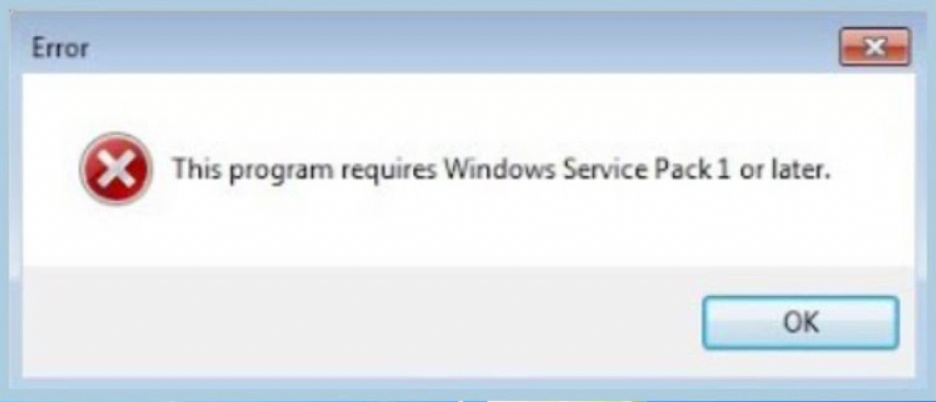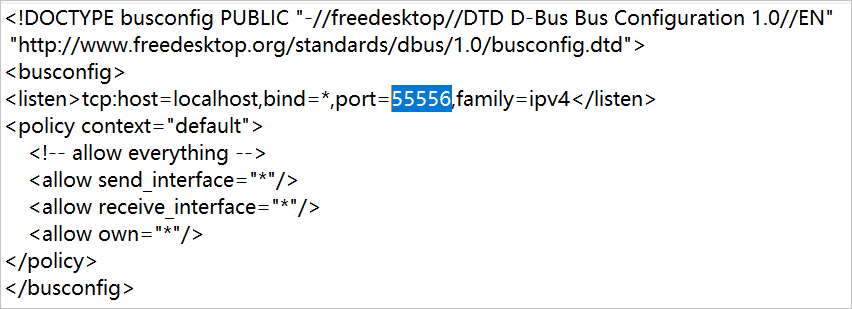This topic provides answers to some frequently asked questions about Alibaba Cloud Workspace clients (hereinafter referred to as Alibaba Cloud Workspace clients). The questions are related to logon exceptions, unexpected exits, and issue reporting.
Index
Category | FAQ |
Installation and uninstallation | |
Running and logon | |
Features and others |
Installation and uninstallation
What do I do if the message "This program requires Windows Service Pack 1 or later" appears when I install an Alibaba Cloud Workspace client?
Problem description
When an end user installs an Alibaba Cloud Workspace client on a local PC running Windows 7, the message This program requires Windows Service Pack 1 or later appears.
Solution
Manually install Windows 7 Service Pack 1 (SP1).
What do I do if a message indicating a UsbDk Runtime Libraries Installer failure appears when I install an Alibaba Cloud Workspace client?
Problem description
When an end user installs the Windows client on a local PC running Windows 7 SP1, the error message UsbDk Runtime Libraries Installer appears.
Cause
Windows 7 SP1 requires many patches. In some cases, the required patches for UsbDk are missing in Windows 7 SP1. Therefore, the message appears when an end user installs the client.
Solution
Install Windows 7 SP1 patches for UsbDk on the local PC and then re-install the Windows client.
How do I update an Alibaba Cloud Workspace terminal?
You can perform the following operations to update an Alibaba Cloud Workspace terminal:
The features of Alibaba Cloud Workspace terminals and related update vary with Alibaba Cloud Workspace terminals. The actual features and operations shall prevail.
What do I do if the Alibaba Cloud Workspace client icon still appears after I uninstall the macOS client?
After an end user uninstalls a macOS client, the client icon remains on the local PC and cannot be permanently removed. The end user can try the following solutions to resolve the issue:
Delete the client icon in Finder or Launchpad.
Open a Finder window. In the left-side navigation pane of the Finder window, click Applications. Enter Alibaba Cloud Workspace in the search box on the right side of the page and search for the client. Alternatively, right-click the Alibaba Cloud Workspace icon in Dock and choose Options > Show in Finder.
Right-click the Alibaba Cloud Workspace icon and select Move to Trash.
Delete the icon or empty Trash to permanently delete the icon.
After you restart the MacBook, uninstall the macOS client.
Running and logon
What do I do if an Alibaba Cloud Workspace client fails to run after I install it?
Problem description
An end user receives an error message wuying.exe has stopped working when the end user launch an Alibaba Cloud Workspace client on a local PC running Windows 7.
Cause
The GPU driver of the local PC is missing, or the driver version does not match.
Solution
On the local PC, run Command Prompt as an administrator.
Press the shortcuts
Win+R. In the Run dialog box, entercmdand click OK.Click the search box in the task bar, enter Command Prompt, and then select Run as administrator from the shortcut menu.
Run the following command to start the diagnostic program:
"C:\Program Files (x86)\Wuying Cloud Computer\bin\diagnose.exe"View the command output. If the following command output is returned, the GPU driver is missing. In this case, install a GPU driver.
Could not initialize EGL display: error 0x3001
What do I do if the message indicating VCRUNTIME140.dll missing appears when I launch an Alibaba Cloud Workspace client?
Problem description
When an end user launches an Alibaba Cloud Workspace client on a local Windows PC, the end user receives the following error message: The program can't start because VCRUNTIME140.dll is missing from your computer. Try reinstalling the program to fix this problem.
Solution
Manually install VC Runtime 2019.
What do I do if the message "Alibaba Cloud Workspace can't be opened because the identity of the developer cannot be confirmed" appears when I try to launch it?
Problem description
An error message indicating that the developer identity cannot be confirmed appears after an end user clicks the Alibaba Cloud Workspace client icon on a MacBook running macOS 10.13 or 10.14.
Solution
You can perform the following operations to launch the client:
Open Finder on the MacBook and click Applications.
Find Alibaba Cloud Workspace from the application list.
Right-click Alibaba Cloud Workspace and click Open.
The issue occurs only the first time you launch the client.
What do I do if a Windows client exits unexpectedly when I launch it?
This issue may be caused by the disabled port 55556. To resolve the issue, perform the following operations:
Go to the directory in which the client is installed.
By default, the client is installed in
C:\Program Files (x86)\Wuying Cloud Computer.Open the
binfolder, find thesdbus_daemon.conffile, and edit the file in a text editor.Change the port number.
The default port number is 55556. You must change the port number to another port number that is not occupied. The port number ranges from 0 to 65535.

Relaunch the client.
If the issue persists, check whether the root certificate of the Windows OS on the local PC is valid.
What do I do if the message indicating network request timeout appears when I log on to an Alibaba Cloud Workspace client?
Run the following command to check whether you can access Elastic Desktop Service over your local network:
ping ecd.region.aliyuncs.comWhen you run the command, replace region with the actual region ID of the cloud computer. Example: ping ecd.cn-hangzhou.aliyuncs.com. If you fail to ping the region ID, check the local network status.
What do I do if a message indicating that the current office network does not allow access from XX appears when I log on to an Alibaba Cloud Workspace client?
This message indicates that the connection type you selected on the Alibaba Cloud Workspace client is different from the connection method that your administrator specified for the office network. Select another connection type or contact your administrator to change the connection method.
What do I do if a message indicating that an office network of the RAM user type is not supported appears when I log on to an Alibaba Cloud Workspace client?
Alibaba Cloud Workspace clients V2.0.0 or later no longer support logon by using office networks (formerly workspaces) of the Resource Access Management (RAM) user type. The ID of this type of office network is ****@****.onaliyun.com. Contact your administrator to create office networks of the convenience account type.
What do I do if a message indicating invalid username or password appears when I log on to an Alibaba Cloud Workspace client?
The following figure shows how to resolve the issue:

Check whether the username and password are correct, and re-enter the username and password.
If the issue persists after you perform the preceding steps, you may have forgotten the password. In this case, you can perform the following operations based on the user account type.
Convenience user
Administrator-activated
Contact your administrator to change the password. Your administrator must perform the following operations:
Log on to the Elastic Desktop Service console.
In the left-side navigation pane, choose .
On the User tab of the Users & Organizations page, find the user that you want to manage and click Change Password in the Actions column.
In the Change Password dialog box, proceed as prompted.
After your administrator sends you the username and new password, you can use the username and password to log on to the Alibaba Cloud Workspace client.
User-activated
You can reset the password on the WUYING client, or contact your administrator to reset the password in the WUYING Workspace console. Then, you can log on to the client by using the username and the new password.
Enterprise AD user
Contact your administrator to change the password. Your administrator must perform the following operations:
Log on to the AD domain controller of your enterprise.
Open Server Manager. In the left-side navigation pane, click AD DS.
In the server list, right-click the required server and select Active Directory Users and Computers.
In the dialog box that appears, find the user for which you want to change the password. You can also modify basic information of the user.
Change the logon password
Right-click the desired user and select Reset Password from the shortcut menu.
In the Reset Password dialog box, specify a new password as prompted and click OK.
Modify basic information
Right-click the desired user and select Properties from the shortcut menu.
Modify the basic information about the user based on your business requirements.
Click OK.
After your administrator sends you the username and new password, you can use the username and password to log on to the Alibaba Cloud Workspace client.
Features and others
Is the local disk mapping feature supported when I use an Alibaba Cloud Workspace client for web to connect to a cloud computer?
The local disk mapping feature is not supported, regardless of whether the feature is enabled for the associated cloud computer. In this case, you cannot read or write data on the local disks from cloud computers.
You can click DesktopAssistant on the cloud computer and use the upload and download feature to read and write data on local disks.
If the upload and download feature does not appear in the DesktopAssistant menu, contact the administrator to change the associated policy to allow file transfer between the web client and local PC.